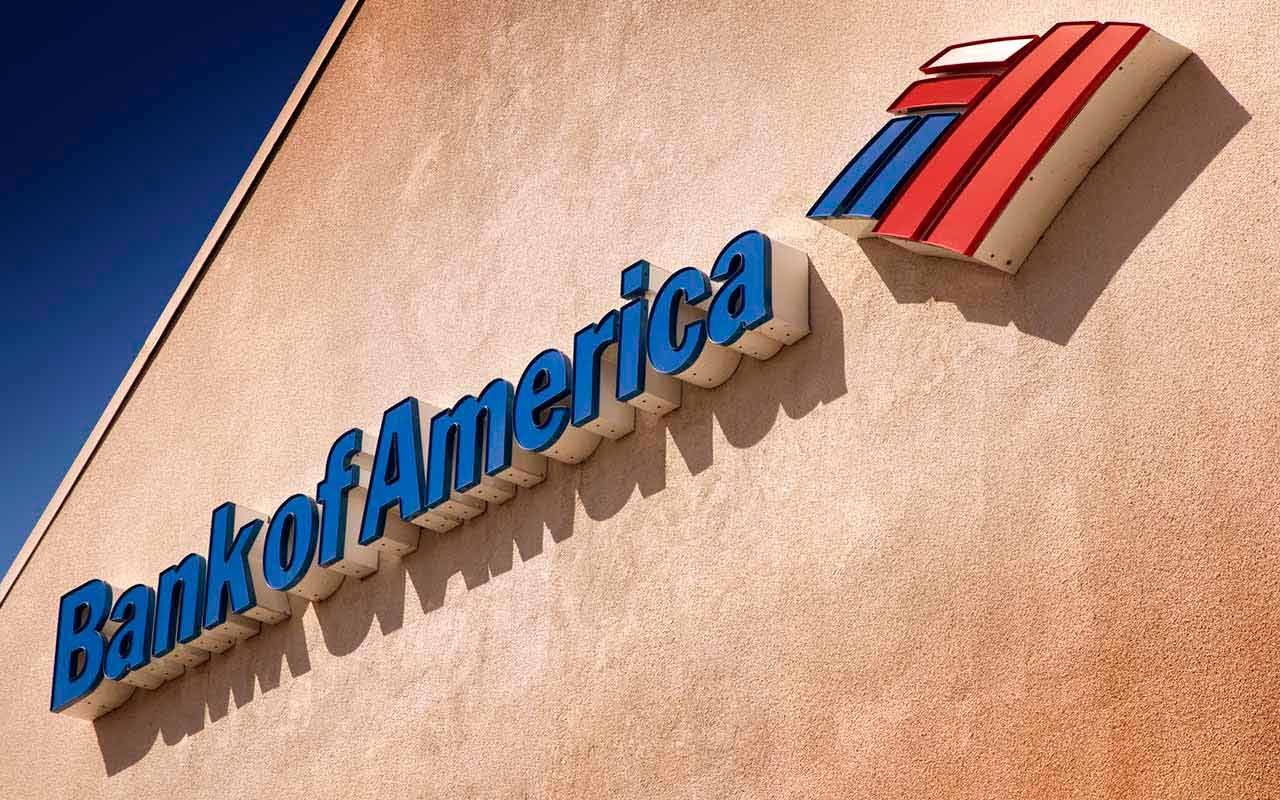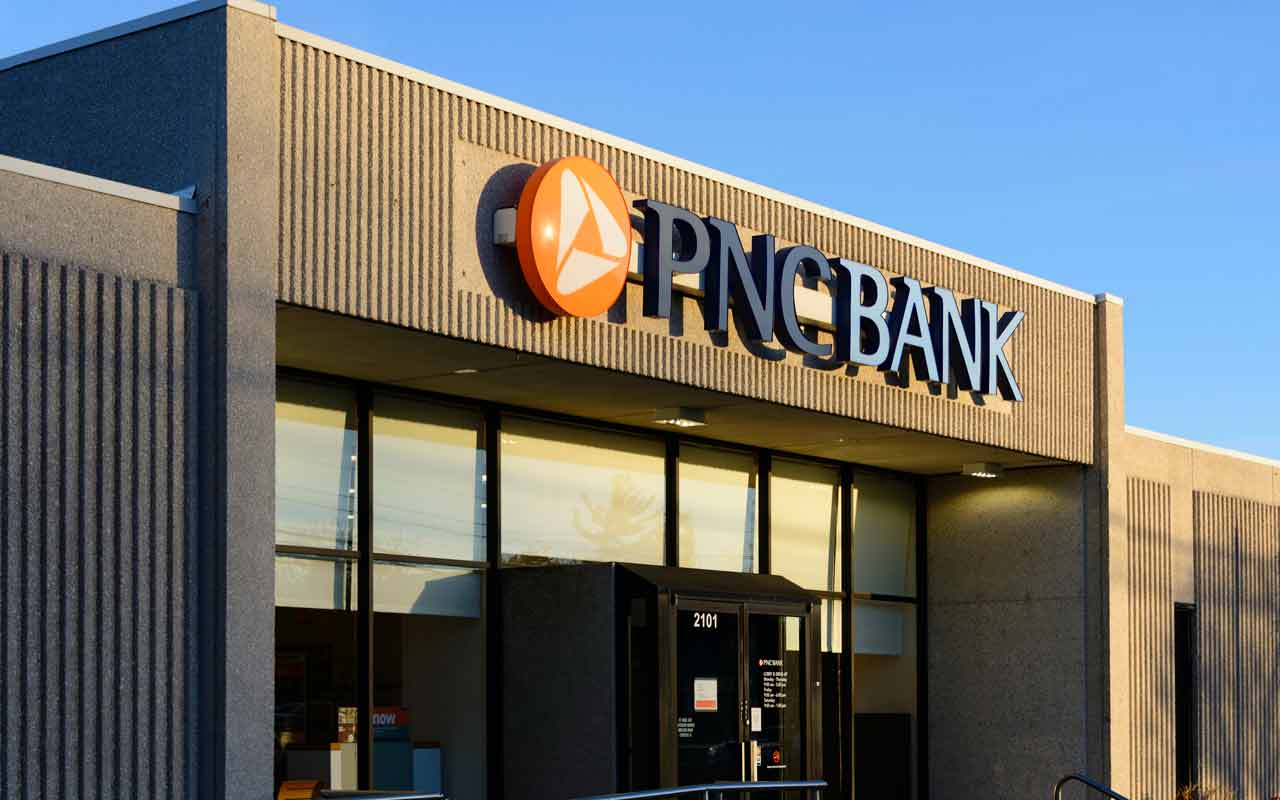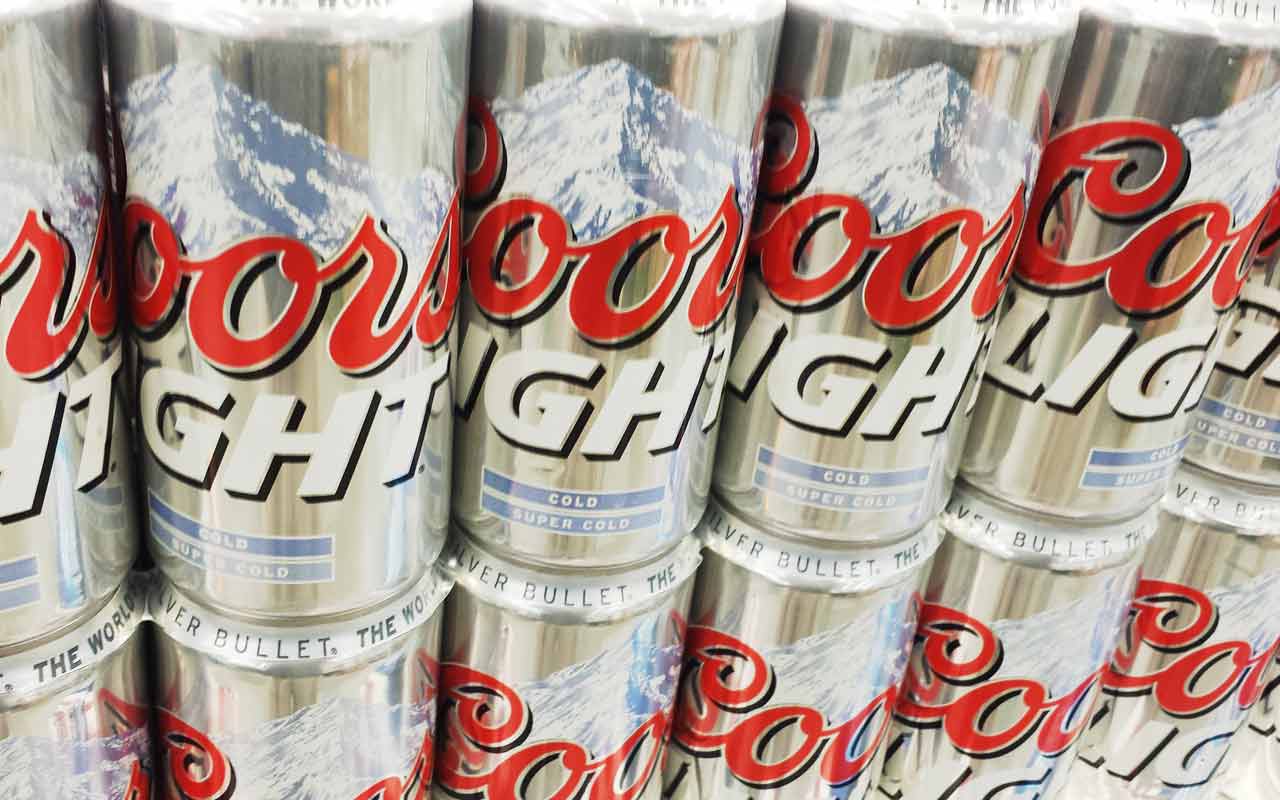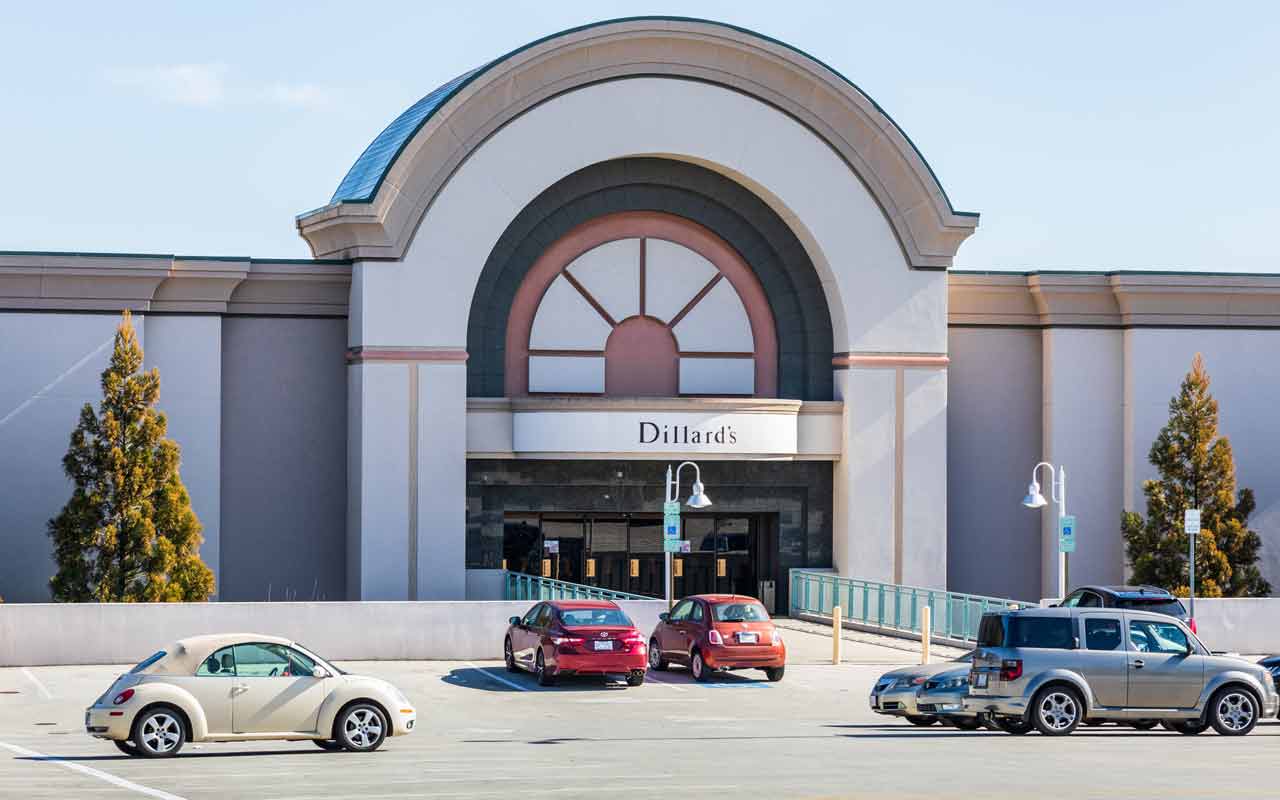30 Massive Dividend Increases From the Past Year
The S&P 500's dividend stocks provided shareholders with an average payout boost of more than 8% in 2019.


The S&P 500's dividend stocks provided shareholders with an average payout boost of more than 8% in 2019. However, a number of outstanding companies announced far more substantial dividend increases – 20%, 30% or more. In a few cases, companies more than doubled their payouts overnight.
Companies often authorize significant upgrades in their regular dividends to attract new investors or stand out from industry competitors. While one-time influxes of cash will often go toward buybacks or one-time special dividends, firms that believe they can maintain heightened levels of profitability will return some of that money through larger regular payouts.
You'll notice that many of the past year's largest dividend increases came from the banking industry. That's in part because some large banks that were sitting on stockpiles of cash received permission from government regulators to distribute their excess capital to investors. Another major impetus for dividend growth was tax reform, which bumped up after-tax profits for many American companies, including banks.
Here, we look at 30 companies that stood out over the past year because of their outsize dividend increases. Each dividend growth stock listed here improved its regular payout by at least 20% in 2019, though in numerous cases, the dividend improved by considerably more. Let's take a look.
Disclaimer
Data is as of Jan. 20. Stocks listed by one-year dividend growth. Dividend yields are calculated by annualizing the most recent payout and dividing by the share price.

Bank of America
- Market value: $306.7 billion
- Dividend yield: 2.1%
- 2019 dividend increase: 20%
- Bank of America (BAC, $34.71) is America's second largest money-center bank by market capitalization, behind only $426 billion JPMorgan Chase (JPM). BofA is tops, however, in market share of consumer deposits, and it also claims to be the country's leading digital bank.
Thanks to ready access to low-cost funding, Bank of America has been able to boost its earnings assets by double digits over the past few years while using less regulatory capital.
The bank finished 2019 with a decent fourth quarter in which net income grew about 6% to 70 cents per share. It closed out the year with assets totaling $2.43 trillion and deposits of $1.43 trillion.
Bank of America's most recent dividend hike was announced in July" a 20% improvement to a new quarterly rate of 18 cents per share. The cash distribution has exploded over the past five years by 260%, but it sprang from a lowly position. BofA's dividend shrank from 64 cents in 2008 to a penny in 2009, and the company only restarted its dividend growth in 2014, when it jumped to 5 cents per share.
A meager payout ratio of 24% (that is, 24% of BofA's profits go toward paying the dividend) leaves a wide margin of safety and plenty of room for future dividend growth.

First Bancorp
- Market value: $1.1 billion
- Dividend yield: 1.9%
- 2019 dividend increase: 20%
- First Bancorp (FBNC, $38.39) is the fourth largest bank headquartered in North Carolina. Founded in 1935, this community bank has $6.1 billion in assets and approximately 100 branch locations across both Carolinas.
The bank plans to expand its footprint in North Carolina's most populous markets, which include Asheville, Winston-Salem, Greensboro, Raleigh and Charlotte, while upgrading its technology. Last year, First Bancorp launched new bill pay systems, mortgage-driven loan apps and call centers. In 2020, the bank plans to introduce new credit card lending and retail banking platforms.
Reflecting the strength of its Carolina metro markets, First Bancorp has generated roughly 34% annual earnings growth over the past half-decade, and it has consistently beaten analyst consensus EPS estimates every quarter since 2015.
First Bancorp announced two dividend hikes in 2019 – though only one, a 20% increase to 12 cents per share, took effect last year. The second announcement, made at the end of December, was a much more significant enhancement to 18 cents per share, or a 50% hike. That surely will rank among 2020's largest dividend increases. Like BofA, a meager payout ratio (23%) gives the company ample room to keep hiking its payouts.

Huntington Ingalls Industries
- Market value: $11.4 billion
- Dividend yield: 1.5%
- 2019 dividend increase: 20%
Military shipbuilder Huntington Ingalls Industries (HII, $277.81) was one of 16 companies awarded huge contracts by the Defense Intelligence Agency in September for analytical and operational support services. The multiyear contract has a five-year base period and a potential value of $17 billion.
That news sparked short-term optimism in the stock and was one of several drivers of the company's 32% market-beating gains last year.
Huntington Ingalls delivered more good news when it reported its September quarter, including 7% revenue growth due to acquisitions and higher production volume at its Newport News ship-building yard. Contract backlog at the end of September was $39.2 billion, up 70% from year-end 2018. HII also generated $250 million of free cash flow, $103 million of which was distributed to shareholders via dividends and share repurchases. Earnings per share declined by 29% due mainly to accounting adjustments and higher pension costs, but its profits still were higher than consensus analyst estimates.
A couple days prior to reporting these results, Huntington Ingalls announced a 20% bump in its payout to $1.03 per share. It also announced a $1 billion increase to its share repurchase program, and extended the timeline of that plan from Oct. 31, 2022, to Oct. 31, 2024.
The company's payout ratio is a prudent 24%, and it has been a generous dividend growth stock, averaging 39% raises annually over the past half-decade.

Synovus Financial
- Market value: $5.9 billion
- Dividend yield: 3.0%
- 2019 dividend increase: 20%
- Synovus Financial (SNV, $40.00) became the Southeast's fifth largest bank last year by acquiring Florida Community Bank. Today, the bank has $48 billion of assets and a network of roughly 300 branches across Georgia, Alabama, South Carolina, Tennessee and Florida.
The merger expanded Synovus' presence in fast-growing areas of Florida that now represent one-third of its franchise. In addition, the company broadened its wealth management and brokerage capabilities, gained new cross-selling opportunities and leveraged its technology investment across a broader footprint.
Synovus has produced 22% annual EPS growth over the past five years and regularly outperforms regional peers on profit metrics such as net interest margin (NIM), return on assets (ROA) and return on equity (ROE).
Its robust financial growth has been redistributed to shareholders in the form of a quarterly dividend that has expanded by well more than 24% annually. That includes a 20% hike announced in mid-January 2019. A payout ratio of 34% implies a safe dividend with flexibility to grow.

UnitedHealth Group
- Market value: $282.8 billion
- Dividend yield: 1.5%
- 2019 dividend increase: 20%
- UnitedHealth Group (UNH, $298.47) is the American market leader in managed health-care plans and benefits. The company provides health-care coverage and related services to more than 137 million individuals and is one of the nation's largest providers of Medicare Advantage plans. Through its OptumHealth business, the company also offers technology-enabled health services, including prescription drug services.
UnitedHealth has been a marvel of predictability, delivering 11% sales growth and roughly 14% EPS growth annually over the past decade. That included a 7% improvement on the top line and a 17% boost to the bottom line in 2019. The result: $18.5 billion in cash flows from operations across the year. And thanks to strong recurring revenues, UNH has high earnings visibility. It's guiding for high-single-digit sales and profit growth in 2020.
UnitedHealth has raised its dividend by 20% for three consecutive years, and the payout has been on the rise annually since 2010.

Visa
- Market value: $454.9 billion
- Dividend yield: 0.6%
- 2019 dividend increase: 20%
- Visa (V, $204.70) is the world leader in digital payments. During its fiscal year ended Sept. 30, 2019, the company processed 138.3 billion payments for 15,500 financial institution clients. Visa's total payments and cash volume grew to $11.6 trillion, and more than 3.4 billion Visa cards were available for use worldwide and accepted at more than 61 million merchant locations.
The company see growth opportunities in its core credit, debit and pre-paid card products as a result of $17 trillion in consumer spending and $15 billion to $20 billion of business-to-business (B2B) spending still done in cash and checks. Visa also plans to accelerate its migration into digital payments with new products for B2B, person-to-person (P2P), business-to-consumer (B2C) and government-to-consumer (G2C) payments.
Visa's revenues improved by 11% in fiscal 2019, fueling a 20% rise in EPS. That came as a result of new client partnerships, organic investments and acquisitions. Recent M&A activity included a cross-border payment processor (Earthport) and a point-of-sale payment software developer (Payworks). Visa is guiding for low double-digit 2020 revenue growth and mid-teens EPS growth.
Visa is gaining a reputation among dividend growth stocks. Its 20% dividend hike in 2019 was right in line with its five-year average and marked the company's 11th consecutive improvement. A modest payout ratio of 19% should enable the company to keep the pedal down.

Federal Agricultural Mortgage Corp.
- Market value: $885.8 million
- Dividend yield: 3.4%
- 2019 dividend increase: 21%
- Federal Agricultural Mortgage Corp. (AGM, $82.70), also known as "Farmer Mac," lends to farmers and ranchers across rural America. The company offers loans secured by first liens on agricultural real estate, agricultural and rural development loans secured by the U.S. Department of Agriculture, as well as loans that help cooperatives finance rural telecom and electric systems. Over the past decade, Farmer Mac's loan volume has grown by nearly 11% annually.
Despite robust loan growth, Farmer Mac holds only a 6% share of the expanding $245 billion agricultural credit market. Significant market growth is expected as a result of rising worldwide food demand; to feed the world's growing population, American farm productivity must double over the next 30 years. Farmer Mac plans to leverage its lower cost of funds – a major competitive advantage – to gain market share.
Farmer Mac's profit growth has been much more modest than the previous companies on this list, at about 7.5% annually. Still, it has been able to afford robust dividend increases of about 38% annually over the past half-decade; last year's hike came to 21%. Despite that, AGM shares boast a modest payout ratio of just 34% of the company's profits.

PNC Financial Services
- Market value: $66.4 billion
- Dividend yield: 3.0%
- 2019 dividend increase: 21%
- PNC Financial Services (PNC, $153.36) provides retail banking services to more than 8 million retail customers across the Mid-Atlantic, Midwest and Southeast. Its digital footprint is built around its well-known "Virtual Wallet" product. The company also offers corporate banking to clients that include two-thirds of the Fortune 500 companies, and its asset management business oversees just less than $300 billion in assets.
PNC also owns a minority stake in BlackRock (BLK), one of the world's largest investment management firms.
2019 was a relatively slow year for the company, however. Revenues improved by just 4%, while net income ticked just 1.3% higher. The company's fourth-quarter earnings managed to top estimates, though Wall Street knocked shares lower on worries about increasing costs. Still, PNC has delivered 3.5% annual growth in assets, 5% yearly EPS growth and nearly 6% gains in book value per share.
But the company is sharing increasing amounts of its wealth to shareholders. PNC announced a $1 billion increase to its share-buyback plan, through the end of Q2 2020. It also announced a 21% dividend hike in July to $1.15 per share – a little higher than its 19% five-year annual average.

Union Pacific
- Market value: $128.6 billion
- Dividend yield: 2.1%
- 2019 dividend increase: 21%
- Union Pacific (UNP, $185.32) operates the Union Pacific Railroad – a rail network connecting 23 states in the western U.S. Its rail system serves many of the fastest-growing American population centers, as well as all of the major West Coast and Gulf Coast ports and eastern gateways. It also connects with Canada's rail systems, and it's the only railroad serving all six major Mexico gateways.
Moreover, UNP provides rail freight services for more than 10,000 customers primarily involved in the agricultural, energy and manufacturing industries.
The trade war with China negatively impacted the company's September quarter results, leading to a 7% year-over-year decline in freight volume. That said, EPS still improved by 3% thanks to operating efficiencies and $1.1 billion worth of share repurchases during the quarter. Union Pacific did guide for a 10% volume decline in the December quarter, however, which caused analysts to reduce consensus 2019 EPS estimates. (The company's Q4 results are due out Jan. 23.)
Recent trade war issues have interrupted an otherwise excellent past performance which had Union Pacific generating 14% yearly EPS gains over the past decade.
The company has also been a consistent dividend growth stock; its payouts have improved for 13 years in a row, including at 14% annual clip over the past five years. UNP offered up a pair of hikes in 2019 – first from 80 cents per share to 88 cents in March, then again to 97 cents in September, which was good for a total jump of about 21%.

Carlisle Companies
- Market value: $9.3 billion
- Dividend yield: 1.2%
- 2019 dividend increase: 25%
- Carlisle Companies (CSL, $163.95) owns a portfolio of niche brands and businesses that manufacture highly engineered products for the roofing, aerospace, medical, defense, transportation, industrial, agriculture, mining and construction industries.
The company delivered a stellar September quarter performance, with sales up 8% year-over-year, its 26th consecutive quarter of sales growth. EPS from continuous operations rocketed 52%. Carlisle benefited from price increases, cost savings and acquisitions in its construction materials business, and a favorable sales mix in its interconnect technologies segment.
This reliable performer has delivered 9% annual sales growth and 10% yearly EPS gains over the past five years. Carlisle is a spectacular dividend growth stock, too, boasting 42 consecutive annual increases. Last August, it bolstered its payout by 25%, to 50 cents per share.

First Choice Bancorp
- Market value: $301.7 million
- Dividend yield: 3.9%
- 2019 dividend increase: 25%
- First Choice Bancorp (FCBP, $25.88) is a Southern California community bank with nine branches and two loan production offices serving Los Angeles, Orange and San Diego Counties. The bank was founded in 2005 and has $1.7 billion in assets. It evolved from being primarily a lender to the Asian-American community to become a more mainstream bank.
Since 2014, First Choice has generated 22% yearly loan growth and 21% deposit growth. Assets exploded by 60% in 2018, when it acquired rival Pacific Commerce Bancorp. The merger also enabled FCBP to improve efficiencies via increased scale. Its profits per share have swelled by 28% annually over the past three years, including a 17% improvement during the September quarter.
First choice's near-term priorities are deepening its presence in Southern California markets and returning cash to shareholders through dividends and share repurchases. It worked toward that latter goal in November, announcing a 25% dividend increase to 25 cents per share – its first payout hike in four years.

MGP Ingredients
- Market value: $650.1 million
- Dividend yield: 1.1%
- 2019 dividend increase: 25%
- MGP Ingredients (MGPI, $38.18) is a major supplier of distilled spirits to branded liquor producers, and also produces specialty wheat proteins and starches. Although not a name familiar to many consumers, MGP is a leading supplier of premium bourbon, rye whiskies, distilled gin and vodkas.
The company has turned around from a $4.9 million loss in 2013 to a $37.3 million profit in 2019 thanks to MGP's focus on premium liquors, whiskey's rising share of the spirits market, and margin gains from a better product mix. The company's sales of premium alcoholic beverages have grown from 57% of overall sales four years ago to 70% today.
In addition to distilled spirits, MGP supplies specialty wheat proteins and starches used in meat substitute products and is well-positioned to benefit from growth in this market to $5.2 billion in 2020.
That said, the company's shares recently plunged by almost 28% in a single day recently after it announced considerably weaker preliminary full-year 2019 results than Wall Street was expecting. CEO Gus Griffin said the lackluster guidance was a "result of us ultimately being unsuccessful in transacting a large portion of the aged whiskey sales we had forecast for the fourth quarter," implying the issue wasn't demand, but MGP's ability to execute and capture that demand.
As for the dividend: MGP actually doubled its quarterly payout in 2018, from 4 cents per share to 8 cents per share, then followed that up with a 25% hike in 2019, to a dime. Its payout ratio of 17% provides plenty of runway for future dividend growth.

CDW Corp.
- Market value: $19.7 billion
- Dividend yield: 1.1%
- 2019 dividend increase: 29%
- CDW Corp. (CDW, $136.85) is an IT solutions provider to more than 250,000 business, government, education and health-care customers in the U.S., Canada and the U.K. It offers cloud computing, collaboration, security, mobility and data center optimization solutions across 100,000 products sourced from 1,000 business partners.
A testimony to just how fractured the IT market is: Despite being a market leader, CDW holds just 5% of the $325 billion opportunity. Growth will come from adding new customers, enhancing capabilities in high-growth solutions areas and expanding service offerings.
CDW's sales rose 11% during the first nine months of 2019, fueling a 13% improvement in adjusted earnings per share. The company is guiding for mid-teen EPS gains for the full year, and expects to exceed its internal goal of growing 200 to 300 basis points faster than the overall American IT market.
Less trumpeted, but still appreciated, is CDW's flourishing dividend. That payout has skyrocketed by 462% since 2015, including a 29% hike in 2019, to 38 cents per share, following a 40% improvement in 2018. CDW's goal is to maintain a payout ratio of roughly 25%, with the dividend growing as profits do.

Mastercard
- Market value: $326.5 billion
- Dividend yield: 0.5%
- 2019 dividend increase: 32%
- Mastercard (MA, $323.65), Visa's chief rival, is another global titan in digital payments. The company's operations span more than 210 countries and territories, and it has processed nearly 79 billion transactions across the nine months ended Sept. 30, 2019. Purchase volume over that time grew from $3.5 trillion, from $3.2 trillion in the year-ago nine-month period, and the company boasted 2.6 billion Mastercard- and Maestro-branded cards worldwide.
Mastercard targets many of the same opportunities that Visa does – its plans for the future include building more into B2B, cross-border B2B and P2P, real-time payments and applications, cyber solutions and data analytics.
The company grew revenues by 15% year-over-year during its third quarter, and profits by 21%. Worldwide, its gross dollar volume (GDV) climbed 14% to $1.65 trillion – U.S. growth was 12%, but 16% across the rest of the world.
Mastercard has been growing both its dividends and share repurchases over the past few years. As of August 2019, MA shareholders had reaped $6 billion from the company via dividends and buybacks – as much as it had spent across all of 2018.
The payout grew by 32% in 2019, to 33 cents per share. Mastercard also cleared the 20% bar with its 2020 hike, announced Jan. 28, to 40 cents per share – a 21% improvement.

Citizens Financial Group
- Market value: $17.8 billion
- Dividend yield: 3.5%
- 2019 dividend increase: 33%
- Citizens Financial Group (CFG, $40.87) offers retail and commercial banking services through approximately 1,100 branches in 11 states across the Mid-Atlantic, New England and Midwest regions. Headquartered in Providence, Rhode Island, the bank had $165.7 billion of assets under management as of the end of 2019.
Citizens finished out 2019 with a record fourth quarter for noninterest income, which grew 17% year-over-year on the back of strong mortgage banking, as well as record results from its capital markets, foreign exchange and interest-rate products.
For the full year, net income grew by just 2%, to $1.7 billion, though EPS jumped by 8%, to $3.81, thanks to significant share repurchases. The company's "Citizens Access" digital platform ended 2019 with deposits of $5.8 billion. Mortgage banking fees surged by 45%, while trust and investment services fees grew by 21%.
The company's efficiency initiatives also bore fruit, with the "Top 5" program achieving $125 million in pre-tax run-rate benefits in 2019. Its "top 6" program is expected to generate between $300 million and $325 million in pre-tax run-rate benefits by the end of 2021.
CFG has been among the more aggressive dividend growth stocks of late. It offered up a pair of dividend increases in 2019: an 18.5% increase in January, to 32 cents per share, and a 12.5% bump in July to 36 cents. It's similar to 2018, when Citizens boosted dividends by 22% in January and 23% in July.

Independence Holding
- Market value: $619.4 million
- Dividend yield: 1.0%
- 2019 dividend increase: 33%
- Independence Holding (IHC, $41.71) underwrites specialty health and disability insurance through its Standard Security Life, Madison National Life and Independence American insurance subsidiaries. The company also provides short-term disability and family leave policies for small employers, long-term disability insurance for school districts and municipalities, and specialty health and pet insurance.
This company goes through cycles, so revenues and profits tend to ebb and flow. Independence's pre-tax income rose 11% in the September quarter, but EPS declined year-over-year due to reduced tax benefits. The company plans to step up investment in its tech infrastructure to support growth in its pet insurance business and Medicare supplement businesses. The pet insurance market is growing nearly 20% annually; meanwhile, 10,000 new seniors age into the Medicare supplement insurance market every day.
Independence also boasts an AA-rated investment portfolio, no debt and substantial free cash flow that totaled $31.7 last year – more than eight times what it paid out in dividends.
IHC's semiannual dividend grew by 33% in 2019 – that follows a 50% bump in 2018, and a 67% increase in 2017.

Monolithic Power Systems
- Market value: $7.9 billion
- Dividend yield: 0.9%
- 2019 dividend increase: 33%
- Monolithic Power Systems (MPWR, $181.61) develops and markets high-performance semiconductors used in computer, automotive, industrial, communications and consumer product applications. The company's largest end-market, consumer products, represents nearly one-third of sales; those semiconductors are used in set-top boxes, monitors, home appliances, televisions and other consumer products.
Monolithic Power Systems' profits have been steadily but forcefully expanding by about 36% annually over the past five years, fueled by rising demand in its computer, automotive, industrial and communications business lines. The company plans to grow by building market share in the cloud computing, automotive and telecom markets. During this year's September quarter, sales improved by 8% and adjusted EPS rose 3%.
MPWR is a relatively new dividend payer, having initiated payouts in 2015. Its dividend growth is new, too – distributions were stuck at 20 cents per share quarterly for the first few years, but jumped to 30 cents per share in 2018, then another 33% last year, to 40 cents.

Molson Coors Brewing
- Market value: $12.2 billion
- Dividend yield: 4.0%
- 2019 dividend increase: 39%
Leading North American brewer Molson Coors Brewing (TAP, $56.57) has been in a downward trend for roughly three years and lost more than 40% of its value in the process. That slump continued in October, after the company reported September-quarter revenue and earnings misses. The weak results were mainly due to volume declines, which the company hopes to offset with increased efficiencies and stepped-up investing in its better-performing brands.
Molson Coors plans to invest more in premium brands such as Blue Moon, Belgian Moon in Canada and Peroni, and expand into new beverage categories such as ciders, wine spritzers and cannabis-infused beverages. The company took one step in that direction in November, announcing a partnership with L.A. Libations, which specializes in emerging non-alcoholic beverages.
At the same time, the company plans to save $600 million over the next three years by consolidating its four business units into two.
To spark some interest in its lackluster shares, Molson Coors announced its first dividend increase in years – a 39% hike to 57 cents per share. The company expects 2020 to be a transition year marked by flat to low-single-digit growth, but the new higher dividend doesn't appear in danger given a moderate 53% payout ratio.

Prudential Bancorp
- Market value: $156.5 million
- Dividend yield: 1.6%
- 2019 dividend increase: 40%
- Prudential Bancorp (PBIP, $17.61) is the holding company for Prudential Bank. The Philadelphia-headquartered bank was founded in 1886 and today operates eight branches in its hometown, as well as loan production offices in Huntingdon Valley and Drexel Hill, Pennsylvania. The bank has nearly $1.3 billion in assets.
PBIP recently reported its second straight year of record financial performance, with assets up 19% year-over-year for the fiscal year ended Sept. 30, 2019, and earnings per share surging by 40%. Some of that growth has come on the back of acquisitions; the 2017 purchase of rival Polonia Bancorp added $285 million (more than 50%) to the bank's asset base.
Management attributed strong 2019 results to big gains in interest-earning assets and good expense management, but warned of margin compression due to interest-rate issues.
Prudential Bancorp's dividend has improved a few times over the past few years, but it's not a serial raiser. Nonetheless, investors celebrated a 40% hike in the payout, announced in December, to 7 cents per share. The bank also has issued special dividends in three of the past four years, including 2019. Its 45-cent one-time distribution was thrice the 15 cents it paid in 2018.

Wendy's
- Market value: $4.9 billion
- Dividend yield: 2.2%
- 2019 dividend increase: 41%
Best known for its made-to-order burgers, Wendy's (WEN, $21.69) operates more than 6,700 company-owned and franchised fast-food restaurants worldwide and is the world's third largest quick-service restaurant chain.
During the September quarter, Wendy's opened 40 new restaurants, bringing the total number of new restaurants opened in 2019 to 111. System-wide sales improved nearly 6% and adjusted EPS rose 12%.
A cornerstone of the company's growth strategy is its "1 More Visit, 1 More Dollar" initiative, which seeks to increase same-store sales by launching new menu items. Going forward, Wendy's is aiming for 4% to 5% annual system-wide sales growth, high-single-digit free cash flow growth and a dividend payout ratio of roughly 50%.
Wendy's has been enhancing the annual sum of its quarterly payout for 10 consecutive years, and it delivered two dividend increases in 2019. First, it announced an 18% upgrade in February, to 10 cents per share, then another 20% hike in October to 12 cents. That amounts to a 41% improvement across the year. That said, its payout ratio is now a hefty 80% of earnings. That doesn't mean Wendy's dividend won't improve in future years, but it does indicate the pace of dividend growth might be muted.

Dillard's
- Market value: $1.8 billion
- Dividend yield: 0.8%
- 2019 dividend increase: 50%
- Dillard's (DDS, $71.57) is a department store operating primarily in the Southern and Midwestern U.S. The company operates 259 Dillard's stores and 30 discount centers spanning 29 states. Total store selling space is estimated at 48.9 million square feet.
Despite retail's well-known woes over the past few years, Dillard's shares have at least been holding up, notching 24% gains over the past few years – nothing to scream about, but far better than the likes of JCPenney (JCP) and Sears Holdings (SHLDQ).
The company's September-quarter results were hardly encouraging, however. While retail margins improved and revenues and profits beat analyst estimates, comparable-store sales (stores open for at least 12 months) were flat and profits per share fell by nearly 19%.
Still, free cash flow over the trailing 12 months is 52% better than the year-ago period, reflecting the benefits of Dillard's improved inventory management.

First US Bancshares
- Market value: $68.5 million
- Dividend yield: 1.1%
- 2019 dividend increase: 50%
- First US Bancshares (FUSB, $11.00) is a small but fast-growing commercial lender providing services through 20 branch offices across Alabama, Tennessee and Virginia. The bank also offers consumer lending through its ALC (Acceptance Loan Company) subsidiary, which has 21 offices across 11 states, and reinsurance through its FUSB Reinsurance segment. The bank currently boasts about $772 million in assets.
The acquisition of a competitor (The People's Bank) in 2018 added $155 million to First US Bancshares' earnings assets and gave it a presence in the fast-growing Knoxville market. The company has identified 18 cities across Alabama, Florida, Georgia, Mississippi, South Carolina and Tennessee as targets for branch expansion, and it recently opened new loan production offices in Mobile, Alabama and Chattanooga, Tennessee.
The bank's EPS shot 227% higher during the first nine months of 2019 as a result of earnings asset growth and merger-related efficiencies of scale. FUSB's earnings have been something of a roller coaster over the past few half-decade, but they're at least pointed in the right direction now.
First US Bancshares had been lifeless on the dividend front, stuck at 2 cents per share quarterly for years. That changed in late November 2019, when the company announced a 50% bump to 3 cents per share.

Medifast
- Market value: $1.3 billion
- Dividend yield: 3.9%
- 2019 dividend increase: 51%
- Medifast (MED, $115.58) manufactures and distributes weight-loss and wellness products and programs, mostly sold under its Optavia brand. The company differentiates its products from other weight-loss brands with clinical studies that have often led to physician recommendations.
A network of 32,200 active coaches sold Medifast products during the September quarter; sales averaged $5,715 per coach – down 1% year-over-year. That said, sales exploded by 37% in the quarter, and EPS improved by 16%. Despite this strong quarter, the company significantly lowered its full-year outlook. It lowered its previous guidance, for $730 million to $750 million in sales and $6.75 to $6.95 in EPS, to $700 million to $710 million in sales and $5.80 to $5.90 in EPS.
The company expects future growth will come from new products, more coaches, a bigger U.S. footprint and Asia-Pacific expansion. Medifast recently began selling products in Hong Kong and Singapore.
Medifast has been churning out impressive dividend growth over the past few years: a 50% increase in 2017, 56% in 2018 and 51% in 2019, to its current payout of $1.13 per share. However, MED's payout ratio is now 77% of this year's expected profits, which means similar dividend growth will really only be possible on the back of significant earnings expansion. The good news there? Analysts are forecasting a 29% jump in the bottom line in 2020.

Goldman Sachs
- Market value: $88.3 billion
- Dividend yield: 2.0%
- 2019 dividend increase: 56%
Financial advisory firm Goldman Sachs (GS, $249.46) was ranked tops in announced and completed mergers-and-acquisitions deals in 2019, according to Dealogic, as well as No. 1 in equity and equity-related offerings. The company derives 40% of revenues from trading, 25% from asset management, 21% from investment banking and 14% from consumer and wealth management.
The firm's revenues were flat in 2019, at $36.5 billion, but higher expenses and provision for credit losses weighed on EPS, which declined 17% year-over-year. Its quarterly profits have missed expectations twice in a row, too. That said, Goldman's fourth-quarter revenues were strong, with rebounds in asset management and trading driving a 23% jump in the top line.
Goldman Sachs purchased assets being sold at bargain prices by troubled rival Deutsche Bank (DB) in 2019, including an Asian portfolio of equity derivatives valued at $50 billion in September. These asset purchases are helping the bank expand market share.
Goldman's 56% payout bump in 2019 came across a pair of dividend increases: A more modest improvement, from 80 cents per share to 85 cents, announced in April, then a 47% burst to $1.25 announced in July. Even after that considerable hike, GS still pays out less than 20% of its profits as dividends.

SS&C Technologies
- Market value: $16.0 billion
- Dividend yield: 0.8%
- 2019 dividend increase: 56%
- SS&C Technologies (SSNC, $63.47) provides financial software to more than 18,000 clients worldwide. The company is transitioning from a software seller to a software-enabled service business that can generate higher margins and more recurring revenues.
The benefits of this shift were evidenced by the company's 96.4% revenue retention rate in the September quarter and 18% adjusted EPS gains. Operating cash flow surged by 134% during the first nine months of 2019 – a boon that enabled SS&C to pay down debt while continuing to make acquisitions.
That's good, because much of its growth – adjusted EPS have improved by 27% annually since its 2010 initial public offering – has come via M&A. The company closed more than $8 billion in purchase transactions in 2018 alone.
SS&C is handing more of that cash over to shareholders, too. The company boosted its quarterly dividend by 25% to start 2019, then announced another 25% hike in November, to 12.5 cents per share – a total 56% increase across the year. Like many of these dividend growth stocks, SSNC boasts a still-modest payout ratio of 28%.

Barrick Gold
- Market value: $31.9 billion
- Dividend yield: 1.1%
- 2019 dividend increase: 67%
Toronto-based Barrick Gold (GOLD, $17.95) is one of the world's largest gold producers. After merging with Randgold Resources last year, the company owns five of the industry's top 10 gold assets and two development-stage assets with the potential to become top 10 gold producers. Barrick's operations are expansive, across 15 countries, but most of its actual production comes from low-risk North American mines.
The company's preliminary full-year and fourth-quarter results indicate that Barrick has hit its full-year guidance targets for production. Barrick's preliminary figure for gold production was 5.5 million ounces, versus an expected range of 5.1 million to 5.6 million ounces. Preliminary copper production of 432 million pounds, if it holds, would exceed guidance of 375 million to 430 million pounds.
The company is shedding some of the assets it acquired with Randgold. Barrick and its Senegalese joint venture partner recently agreed to sell their 90% stake in a Senegal gold mine, for up to $430 million. This follows the sale of its 50% stake in the Kalgoorlie Super Pit, one of Australia's largest gold mines, for $750 million a month earlier. Barrick Gold was targeting $1.5 billion of assets sales in 2019 and plans to use some of the proceeds to expand its footprint in copper mining. Demand for copper is rising due to the use of this metal in low-carbon technologies.
Barrick Gold closed out 2018 by issuing an "enhanced" 7-cent-per-share dividend in connection with the Randgold merger (it had paid 3 cents quarterly since the start of 2017). However, its regular payout improved to 4 cents per share starting in 2019, then again to 5 cents later in the year. That represents a 67% improvement from its regular dole from 2018.

Universal Display
- Market value: $10.0 billion
- Dividend yield: 0.2%
- 2019 dividend increase: 67%
- Universal Display (OLED, $212.85) develops and commercializes organic light-emitting diode (OLED) technologies and materials used in smartphones and TVs. Its customers include electronics manufacturers such as Apple (AAPL), LG Display (LPL), BOE Technology, Sharp (SHCAY) and Pioneer. Universal Display holds more than 5,000 patents on its technologies and serves customers from offices in the US, China, Hong Kong, Taiwan, South Korea, Japan and Ireland.
Results have been choppy over the past few years, but generally pointed in the right direction. Revenues have grown roughly 11% per year through the end of 2018; profits have dropped from $1.59 per share to $1.24 per share in that same time frame, but analysts are expecting a $3.10 profit for full-year 2019.
New product launches helped Universal Display deliver 71% sales growth and 184% EPS gains during the first nine months of 2019.
Universal Display is a perfect example of the massive dividend increases that often come shortly after a company initiates payouts. The company began distributing a 3-cent-per-share dividend in 2017, doubled it in 2018, then hiked the payment another 67% in 2019 to a dime per share. Low 13% payout, the company's minimal debt and big cash reserves provide a wide margin for dividend safety.

UniFirst
- Market value: $4.0 billion
- Dividend yield: 0.5%
- 2019 dividend increase: 122%
- UniFirst (UNF, $211.82) supplies workplace uniforms and protective clothing to more than 300,000 customers, and it outfits nearly 2 million workers every business day. Workplace uniforms are a highly concentrated market, with just four companies (including Unifirst) representing more than 40% of industry volume. Growth in the uniform market has been robust at twice the rate of GDP.
The company's solid share of a growing uniform market has fueled roughly 5% annual revenue and EPS gains over the past half-decade, and results that have exceeded analyst estimates in nine of the past 10 quarters.
Unifirst's EPS rose by almost 14% in the fiscal year ended Aug. 31, 2019, on 7% sales growth. The company is guiding for at least 3% sales growth in fiscal 2020, but lower EPS mostly due to the fiscal year being one week shorter than 2019.
Unifirst has ramped up its dividend like a company possessed over the past few years. It announced a tripling of its dividend in 2018, to 11.25 cents per share, then followed that up with a 122% hike announced in October 2019, to 25 cents per share. The outlook for more dividend growth is supported by modest 12% payout, low debt of $45.6 million and cash totaling $356 million.

Innovative Industrial Properties
- Market value: $1.0 billion
- Dividend yield: 4.9%
- 2019 dividend increase: 186%
- Innovative Industrial Properties (IIPR, $82.50) is a rare bird in the real estate world. This real estate investment trust (REIT) acquires, owns and manages specialized industrial properties that are leased to licensed operators of medical cannabis facilities. The company owns a portfolio of 41 properties across 13 states. Its properties are 100% leased and have average remaining lease terms of 15.5 years.
Through the first nine months of 2019, the company had acquired 30 properties across nine states and entered into leasing agreements with 12 new operators. Purchase costs for these properties totaled $106.9 million. To raise capital for more property acquisitions, Innovative Industrial Properties recently issued $134.1 million of exchangeable senior notes and completed a $162.8 million share offering.
Diluting shares like that has consequences – the secondary offering triggered an 18% decline in IIPR's shares in July, and the stock lost more than half its value between then and late October. Still, Innovative Industrial Properties has been explosive by any standard, but especially compared to other REITs. Its stock has delivered a total return (price plus dividends) of 379% over the past three years, versus just 29% for the Vanguard Real Estate ETF (VNQ).
The REIT continues to grow by leaps and bounds, announcing 171% revenue growth during the first nine months of 2019. Adjusted funds from operations (FFO, a measure of profitability for real estate companies) blossomed by 117% on a per-share basis. That has helped shares rebound somewhat off its October lows.
IIPR's biggest fireworks in 2019, however, came courtesy of its rapidly climbing payout. The REIT delivered four dividend increases across the year, climbing from 2018's 35 cents per share to $1 per share by 2019's end – a total improvement of 186%.

Pioneer Natural Resources
- Market value: $24.6 billion
- Dividend yield: 1.2%
- 2019 dividend increase: 450%
Boosted semiannual from 16 cents to 32 cents, then boosted to a quarterly 44 cents. Ends up being 450%.
- Pioneer Natural Resources (PXD, $148.79) – a major oil producer in the Permian Basin, America's most prolific shale oil play – delivered a pair of explosive dividend increases in 2019, with an additional twist.
The company had doled out a 4-cent-per-share semiannual dividend for years since 2009, when it was forced to cut its payout amid the Great Recession. But that changed in 2018, as PXD quadrupled its dividend, to 16 cents per share.
Pioneer then doubled that dole in March 2019, to 32 cents per share, and followed that up by not just raising its regular payout to 44 cents in September, but switching its payout plan from semiannually to quarterly. That projects out to $1.76 per share every year, up from 32 cents last year – a whopping 450% improvement.
As for the company itself: It became a pure play in the Permian Basin last year by selling its Eagle Ford shale assets. It sold its remaining Eagle Ford assets in May of last year, for about $475 million, leaving it with roughly 680,000 net acres in the Midland Basin.
Pioneer has taken advantage of its improved capital efficiency, $100 million of restructuring-related cost savings, and robust cash to boost shareholder returns through share repurchases and dividend growth. In addition to its generous dividend hikes, the company repurchased $728 million shares during the first nine months of 2019 as part of its $2 billion repurchase plan.
Get Kiplinger Today newsletter — free
Profit and prosper with the best of Kiplinger's advice on investing, taxes, retirement, personal finance and much more. Delivered daily. Enter your email in the box and click Sign Me Up.

Lisa currently serves as an equity research analyst for Singular Research covering small-cap healthcare, medical device and broadcast media stocks.
-
 Stock Market Today: Stocks Struggle Amid Tariff Uncertainty
Stock Market Today: Stocks Struggle Amid Tariff UncertaintyBoeing dropped after China suspended new aircraft orders, while Bank of America and Citi climbed on earnings beats.
By Karee Venema
-
 Starbucks 2025 Dress Code Changes: See the New Look
Starbucks 2025 Dress Code Changes: See the New LookThe 2025 Starbucks dress code change features a uniformed look as part of creating a more familiar and friendly cafe experience.
By Sean Jackson
-
 Stock Market Today: Stocks Struggle Amid Tariff Uncertainty
Stock Market Today: Stocks Struggle Amid Tariff UncertaintyBoeing dropped after China suspended new aircraft orders, while Bank of America and Citi climbed on earnings beats.
By Karee Venema
-
 Stock Market Today: Stocks Gain on Tech, Auto Tariff Talk
Stock Market Today: Stocks Gain on Tech, Auto Tariff TalkThe Trump administration said late Friday that it will temporarily halt tariffs on some Chinese tech imports.
By Karee Venema
-
 Stock Market Today: Stocks Surge to Close a Volatile Week
Stock Market Today: Stocks Surge to Close a Volatile WeekIt was another day with a week's worth of both news and price action, but it ended on a strongly positive note.
By David Dittman
-
 Stock Market Today: Uncertainty Proliferates: Dow Loses 1,014 Points
Stock Market Today: Uncertainty Proliferates: Dow Loses 1,014 PointsWeaker-than-expected consumer inflation data wasn't enough to stabilize sentiment during another volatile day for financial markets.
By David Dittman
-
 Stock Market Today: Tariff Pause Triggers 3,000-Point Dow Rally
Stock Market Today: Tariff Pause Triggers 3,000-Point Dow RallyThe bond market is sending concerning signals as the Trump administration executes its rapid reordering of global trade relationships.
By David Dittman
-
 Stock Market Today: Tariff Talks Drive Another Up-and-Down Day
Stock Market Today: Tariff Talks Drive Another Up-and-Down DayTrade war negotiations are happening, but the "fear gauge" is gyrating, and investors, traders and speculators are still searching for signs of a bottom.
By David Dittman
-
 Stock Market Today: Trump Pushes Dow Into 2,600-Point Swing
Stock Market Today: Trump Pushes Dow Into 2,600-Point SwingTariffs and trade war weigh on prices across global financial markets, with little light at the end of the tunnel.
By David Dittman
-
 Stock Market Today: Dow Drops Another 2,231 Points to Hit a Correction
Stock Market Today: Dow Drops Another 2,231 Points to Hit a CorrectionThe Nasdaq Composite, meanwhile, entered a new bear market with its latest slide.
By Karee Venema
